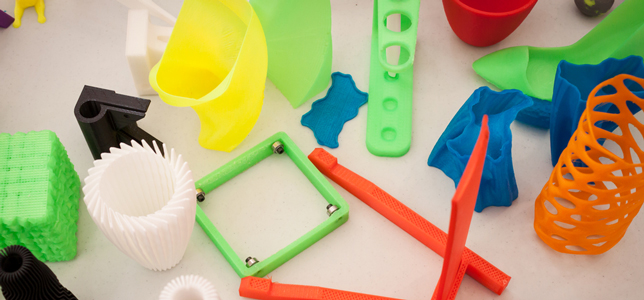It's Not About Making Stuff
Makerspaces and 3D printing have come a long way in higher education, from early excitement over 3D-printed learning objects to a focus on creativity and higher-order thinking.

Photo by Stefano Tinti / Shutterstock.com
One of the first articles Campus Technology ran about 3D printing was back in 2007, when our IT Trends newsletter columnist Terry Calhoun enthused about "A New Dimension in 'Printing.'" Like most techie people in those days, he was impressed with the Star Trek replicator-style ability to produce objects on demand, whether they be toy soldiers, Lego bricks or monogrammed flatware. At the time, 3D printers carried a hefty price tag, but Calhoun correctly predicted that the devices would become more affordable in the near future.
By 2013, 3D printing started to gain traction in higher education. The NMC Horizon Report that year named 3D printing as a key technology to watch in higher education, linking it to the "Maker culture, a technologically savvy, do-it-yourself community dedicated to advancing science, engineering and other disciplines through the exploration of 3D printing and robotics." Still, the focus was mainly on how 3D-printed objects could impact teaching and learning. According to the report, "One of the most significant aspects of 3D printing for education is that it enables more authentic exploration of objects that may not be readily available to universities. While 3D printing is four to five years away from widespread adoption in higher education, it is easy to pinpoint the practical applications that will take hold. Geology and anthropology students, for example, can make and interact with models of fragile objects such as fossils and artifacts."
In the past few years, the thinking around 3D printing has shifted, as the technology has become more or less intertwined with the idea of makerspaces and the maker movement. The "stuff" that students create in makerspaces, via 3D printing or other technologies, is now less important than the overall "maker" experience — interdisciplinary collaboration, hands-on problem-solving, digital literacy, entrepreneurship and more. As the 2016 NMC Horizon Report noted, "Regardless of what they encompass, the general purpose of makerspaces is to provide a place for users to engage in self-directed activities that spark their curiosity, help them identify passions, and build a habit of lifelong learning. By participating in hands-on design and construction in makerspaces, students engage in creative problem-solving and higher-order thinking." (See our analysis of the full 2016 Horizon Report: Higher Education Edition in our March issue.)
In this issue's C-Level View, Kyle Bowen, director for teaching and learning with technology at Penn State, gives that purpose of makerspaces a name that I had not heard before: maker fluency. As he explained, the most important thing that makerspaces provide is the opportunity to be creative, hone 21st-century skills and understand the when and why of maker thinking — not the technology itself or the physical products that are generated.
In other words, it's no longer about making stuff. "The bottom line is that students will begin to apply maker fluencies in many different areas now — but they will also develop abilities they can draw on long term, to solve problems far into the future," Bowen told us. "We have to realize that the technologies our students will be working with after graduation and beyond haven't been invented yet. But the fluencies they develop now will serve them for a long time."
About the Author
Rhea Kelly is editor in chief for Campus Technology, THE Journal, and Spaces4Learning. She can be reached at [email protected].